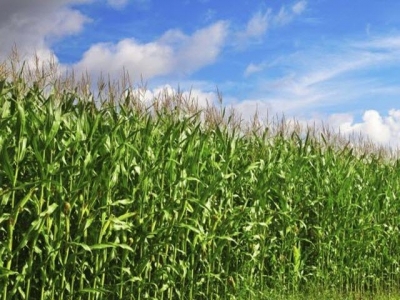Farming crops with rocks could reduce carbon dioxide

A new study has found that farming crops with crushed rocks could help to improve global food security and capture carbon dioxide from the atmosphere.
swisshippo/iStock/Thinkstock
The pioneering research by scientists at the University of Illinois, together with U.S. and international colleagues, suggests that adding fast-reacting silicate rocks to croplands could capture CO2 and give increased protection from pests and diseases while restoring soil structure and fertility.
Stephen Long, Gutgsell Endowed University professor of crop sciences and plant biology at the University of Illinois and co-author of the study, provides context: “Global warming is a problem that affects everyone on the planet. Scientists generally have done a poor job of getting across the point that the world must reduce emissions of greenhouse gases from fossil fuels and combine this with strategies for extracting carbon dioxide from the atmosphere to avoid a climate catastrophe.”
David Beerling, director of the Leverhulme Centre for Climate Change Mitigation at the University of Sheffield and lead author of the research, explained the project: “Human societies have long known that volcanic plains are fertile, ideal places for growing crops without adverse human health effects, but until now there has been little consideration for how adding further rocks to soils might capture carbon.
“This study could transform how we think about managing our croplands for climate, food and soil security. It helps move the debate forward for an under-researched strategy of CO2 removal from the atmosphere -- enhanced rock weathering -- and highlights supplementary benefits for food and soils. Adopting strategies like this new research could have a massive impact and be adopted rapidly.”
The research, published in Nature Plants, examined amending soils with abundant crushed silicate rocks, like basalt, left over from ancient volcanic eruptions. As these minute rock grains dissolve chemically in soils, they take up carbon dioxide and release plant-essential nutrients.
Critically, enhanced rock weathering works together with existing managed croplands. Unlike other carbon removal strategies being considered, it doesn’t compete for land used to grow food or increase the demand for fresh water. Other benefits include reducing the usage of agricultural fertilizers and pesticides, lowering the cost of food production, increasing the profitability of farms and reducing the barriers to uptake by the agricultural sector.
Crushed silicate rocks could be applied to any soils, but arable land is the most obvious since it is worked and planted annually. It covers approximately 10% of the global land area.
Farmers already apply crushed rock in the form of limestone to reverse acidification of soils caused by farming practices, including the use of fertilizers. Managed crops, therefore, have the logistical infrastructure, such as road networks and machinery, needed to undertake this approach at scale. These considerations could make it straightforward to adopt.
“Our proposal is that changing the type of rock, and increasing the application rate, would do the same job as applying crushed limestone but help capture CO2 from the atmosphere, storing it in soils and eventually the oceans,” Long said.
James Hansen from the Earth Institute at Columbia University and co-author of the work, adds, “Strategies for taking CO2 out of the atmosphere are now on the research agenda and we need realistic assessment of these strategies, what they might be able to deliver, and what the challenges are.”
The article, “Farming with crops and rocks to address global climate, food and soil security,” is published in Nature Plants. Researchers participated from University of Illinois, University of Sheffield, Lancaster University, James Cook University, Potsdam Institute for Climate Impact Research, University of California, Santa Cruz, and Columbia University. The work was supported by the Leverhulme Trust.
Có thể bạn quan tâm
Phần mềm

Phối trộn thức ăn chăn nuôi

Pha dung dịch thủy canh

Định mức cho tôm ăn

Phối trộn phân bón NPK

Xác định tỷ lệ tôm sống

Chuyển đổi đơn vị phân bón

Xác định công suất sục khí

Chuyển đổi đơn vị tôm

Tính diện tích nhà kính

Tính thể tích ao hồ



 Investment in high-tech agriculture growing
Investment in high-tech agriculture growing  Coffee exports target doubling to US$6 billion
Coffee exports target doubling to US$6 billion